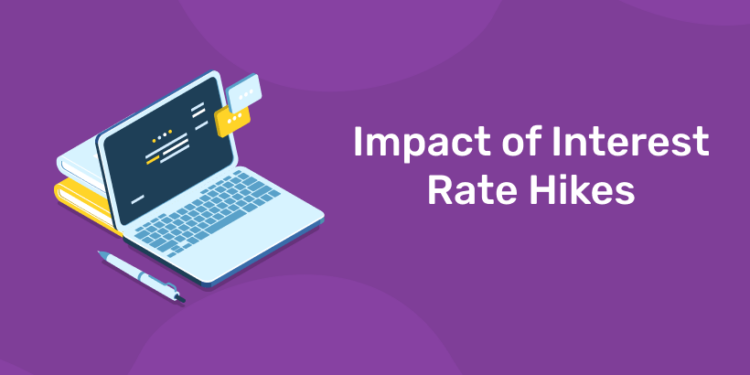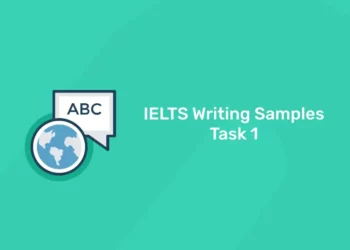Table of Contents
The goal of the Federal Reserve is to maintain a healthy, balanced economy in the United States. Inflation and asset bubbles can spiral out of control and endanger the stability of the economy when the economy is booming. When this happens, the Fed intervenes by raising interest rates, which aids in slowing the economy and maintaining steady growth.
Interest Rate Increase 2022
On June 15, 2022, the Federal Reserve increased interest rates by 0.75 percentage points, the third increase of the year and the biggest since 1994. The measure is intended to counteract the fastest rate of inflation in over 40 years.
Click here to increase your stock market literacy.
Impact of Interest Rate Hikes
1: What is a stock?
The Fed’s primary responsibility is overseeing the country’s monetary policy, which entails managing the money supply in the economy. Although the Fed has a variety of instruments at its disposal, its capacity to affect interest rates is by far the most visible and potent monetary policy tool. The federal funds rate, often known as the federal funds target rate, is what people usually refer to when they talk about the Fed raising interest rates. The Federal Open Market Committee (FOMC) establishes a target range for the federal funds rate at its regularly scheduled meetings. This rate serves as a benchmark for the interest rates that major commercial banks charge one another for overnight loans.
To meet the liquidity standards set by authorities, notably the Fed, banks borrow overnight loans. The effective federal funds rate is the average of the rates that banks negotiate for overnight lending. Other market rates, such as the prime rate and SOFR, are subsequently impacted by this. The federal funds rate is the most significant benchmark for interest rates in the U.S. economy and has an impact on interest rates across the entire world economy because of this relatively indirect arrangement.
Click to get to know more about various subjects under the stock market
Impact of Interest Rate Hikes on Stocks
Even if rising interest rates can affect profitability on a larger scale, businesses that conduct the majority of their business in the United States often benefit from an increase. That is because the stronger U.S. currency makes regional goods more enticing. Companies that conduct a sizable portion of their business internationally suffer from the increasing dollar. Companies abroad experience an actual reduction in sales when the U.S. dollar strengthens versus other currencies owing to higher interest rates.
At some time, businesses including Microsoft, Hershey, Caterpillar, and Johnson & Johnson have all issued warnings about how the strengthening dollar may affect their profits. Rate increases frequently have a favourable effect on the financial industry. Bank equities often do well when interest rates are rising. Even though there is an indirect correlation between interest rates and the stock market, the two typically move in opposing directions. As a general rule, when the Fed lowers interest rates, the stock market rises, and when the Fed raises interest rates, the stock market falls. However, there is no way to predict how the market will respond to every particular change in interest rates that the Fed decides to make.
Click to learn how interest rates fluctuation is significant in the stock market
Impact of Interest Rate Hikes on Prime Rate
The prime rate increases as soon as the Fed raises interest rates (referred to by the Fed as the Bank Prime Loan Rate). The credit rate that banks offer to their most credit-worthy clients is represented by the prime rate. Other types of consumer credit are determined by this rate because a higher prime rate means that banks will raise fixed- and variable-rate borrowing charges when determining the risk of lending to less creditworthy businesses and individuals.
Impact of Interest Rate Hikes on Credit Card Rates
Banks evaluate other people’s creditworthiness based on their risk profile and the prime rate. Rates for credit cards and other loans will be impacted because both involve a thorough risk assessment of customers seeking credit to make purchases. Borrowing for the short term will have higher interest rates than borrowing for the long term.
Impact of Interest Rate Hikes on Savings
The tick-up in the prime rate results in higher rates for the money market and certificate of deposit (CD) accounts. Theoretically, this should encourage consumers and corporations to save more because they can get a better return on their investments. The consequence, on the other hand, might be that someone who is heavily in debt would want to work toward paying off their debts to counterbalance the higher variable rates associated with credit cards, home loans, or other debt instruments.
Master stock trading with us. Enroll now for a free demo!
Impact of Interest Rate Hikes on Bonds and Borrowing
Bonds are highly susceptible to fluctuations in interest rates. Existing bond prices automatically fall on the market when the Fed raises interest rates. This is due to the upcoming release of new bonds that will pay investors greater interest rates. Existing bonds will lose value to reflect the rising overall rates, luring investors with their comparably lower interest rate payments. Inflation also reduces the true value of a bond’s face value, which is especially problematic for longer-term debts. People are also less willing to borrow money or refinance debt because it is more expensive to do so as interest rates climb.
Impact of Interest Rate Hikes on Business Profits
The banking industry typically experiences higher earnings as a result of rising interest rates because they can now profit more from the money they lend out. But a rate increase reduces profitability for the rest of the world’s businesses. That’s because expanding requires more costly capital. That can be bad news for a market that is now seeing a decline in earnings. Since they may get capital with more affordable financing and make investments in their operations at a lower cost, declining interest rates should increase the earnings of many enterprises.
Impact of Interest Rate Hikes on U.S. National Debt
An increase in interest rates drives up the cost of borrowing for the US government, driving up the national debt as well as budget deficits. The Committee for a Responsible Federal Budget projects a $12.7 trillion overall budget deficit from 2022 to 2031. The deficit would rise by $1 trillion with a 0.5 percentage point increase in rates. In 2031, the national debt as a share of GDP is projected to be 107.5 per cent. This would rise to 110.6% of GDP if rates were 50 basis points higher.
Click here to know more about fed interest and its effect on the stock market
Impact of Interest Rate Hikes on Mortgage Rates
Home buyers may rush to close on a deal for a fixed loan rate on a new home at the first hint of a rate hike, but historically, mortgage rates have fluctuated more in line with the yield on domestic 10-year Treasury notes, which is heavily influenced by interest rates. As a result, if interest rates decrease, so will the cost of a mortgage. It becomes more affordable to purchase a home as mortgage rates decline.
Impact of Interest Rate Hikes on Auto Loan Rates
The Fed’s zero-interest-rate policy has been extremely advantageous for the auto industry, but rising benchmark rates will have a small but noticeable effect. In principle, reduced auto loan interest rates should boost automobile purchases, but these expensive things might not be as sensitive to borrowing on credit cards for more urgent requirements.
Impact of Interest Rate Hikes on Home Sales
The demand for homes often declines when interest rates and inflation rise. Homebuyers can expect to pay at least 60% in interest throughout their investment, for instance, on a 30-year loan at 4.65 per cent. However, if rates drop, the same house at the same price will have lower monthly payments and less interest paid overall throughout the mortgage. The same home becomes more inexpensive as mortgage rates decline, therefore purchasers should be keener to make purchases.
Master stock trading with us. Enroll now for a free demo!
Impact of Interest Rate Hikes on Inflation
When the average price of goods and services increases in an economy, it is said to be experiencing inflation. This can happen when a country’s currency loses value or when the economy is overloading, or when demand for goods is growing too quickly and supply is not keeping up with it, which results in price increases. For the central bank to control inflation, interest rates are frequently raised when inflation increases (they tend to target 2 per cent a year of inflation). However, if interest rates decline, inflation may quicken as individuals start using cheap borrowing again and driving up costs. Interest rate increases result in lower inflation. When interest rates rise, it makes it more expensive to borrow money, which drives up the cost of goods and services. If the interest rate is greater, it will cost more to buy a house or a car. Customers spend less as a result, which lowers the demand for goods and services. Inflation is decreased when demand declines and prices follow suit.
Impact of Interest Rate Hikes on Consumers
Historically, rising borrowing prices have a negative impact on consumer expenditure. Higher credit card interest rates and higher savings rates brought on by better bank rates promote a decline in impulsive consumer spending. Consumers can purchase items on credit for less money as interest rates decline. This can include everything from appliances purchased with a credit card to cars financed with loans.
Click here to learn more about the Indian stock market
Impact of Interest Rate Hikes on the Indian Economy
In a clear demonstration of its commitment to bringing down inflation in the largest economy in the world from 8.6 per cent in May to 2 per cent—the fastest increase in four decades—the Federal Reserve increased its target interest rate by three-quarters of a percentage point on June 15. It was the largest rate increase by the US Federal Reserve since 1994. The Fed predicted that US economic growth would slow down in the coming months and that the unemployment rate would likely rise. The shift will affect the Indian economy in the following five ways:
- Tough economic conditions: Although there will be less price pressure on globally traded commodities, of which India is a net consumer, if the Fed is successful in slowing demand in the largest consumer market in the world, higher interest rates will lessen the “push factor” for risk capital to flow into emerging markets like India.
- Trade deficit and declining rupee: Indian markets run the risk of losing their appeal to global investors. The Indian rupee has already weakened as a result of a growing trade deficit, an increase in import growth that has outpaced export growth, and several other factors. According to economists, the US Fed’s most recent rate increase will increase US Treasury yields and strengthen the dollar’s position versus the Indian rupee.
- consumer hardship: Similar to their American counterparts, Indian consumers see a decline in their real disposable income as a result of inflation. Higher debt servicing costs will result in decreased real disposable incomes as a result of the Feds and the Reserve Bank of India’s withdrawal of monetary accommodation.
- Current account deficit: RBI has been attempting to indirectly affect the balance of payments (BoP) within the framework of a controlled floating exchange rate regime through interest rates, according to economists. The rupee’s freefall depreciation would help exporters, but it would also result in a massive current account deficit that the government would be unable to handle. The Mundell-Fleming model states that a country’s economy cannot sustain a stable exchange rate, unrestricted capital flow, and independent monetary policy at the same time.
- Increased Inflation: The Fed rate hike may cause India’s inflation rate to increase. The price of imported commodities including electronics, crude oil, chemicals and fertilisers, active medicinal components, and chemicals will rise as a result of the rupee’s depreciation.
Start investing like a pro. Enroll in our Stock Market course!
The price of borrowing money rises when interest rates do as well. This raises the price of purchasing some products and services, such as homes and cars. Customers spend less as a result, which lowers the demand for goods and services. When consumer demand for products and services declines, firms reduce production and fire employees, which raises the unemployment rate. In general, the economy weakens when interest rates rise. The opposite is true when interest rates are reduced. Download the Entri app to increase your stock market literacy.










